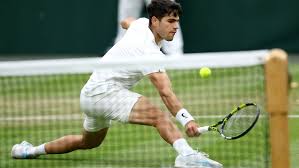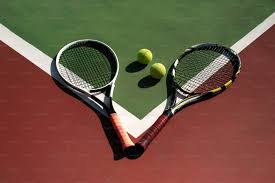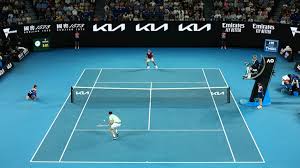Introduction
Tennis is one of the world’s most dynamic and widely played sports, admired for its combination of athleticism, strategy, and elegance. With millions of players and fans across continents, tennis is both a competitive professional sport and a recreational activity for people of all ages. From the green lawns of Wimbledon to local courts in neighborhoods, tennis continues to inspire passion, fitness, and sportsmanship worldwide.
This article explores the history, rules, formats, famous tournaments, benefits, and global influence of tennis, while highlighting why it remains one of the most celebrated sports today.
A Brief History of Tennis
The origins of tennis can be traced back to 12th-century France, where a game called “jeu de paume” was played with the hand instead of a racket. By the 16th century, rackets were introduced, and the game became popular in England, France, and Spain.
The modern version of tennis, known as lawn tennis, emerged in the late 19th century in England. The first Wimbledon tournament was held in 1877, making it the oldest tennis competition in the world. Today, tennis is governed internationally by the International Tennis Federation (ITF) and has become a global sport with four major Grand Slam tournaments.
Basic Rules of Tennis
Tennis is played on a rectangular court divided by a net, either individually (singles) or in pairs (doubles). Players use rackets to hit a ball over the net, aiming to score points when the opponent cannot return it within the court boundaries.
Scoring System:
-
Point Progression: 15, 30, 40, and Game.
-
Deuce: At 40-40, a player must win by two consecutive points.
-
Set: A player wins a set by winning at least six games with a two-game margin.
-
Match: Matches are best of three or five sets, depending on the competition.
Types of Tennis Courts
Tennis is unique because it is played on different surfaces, each affecting the speed and bounce of the ball:
-
Grass Courts – Fast-paced and traditional (e.g., Wimbledon).
-
Clay Courts – Slower, favoring long rallies (e.g., French Open).
-
Hard Courts – Balanced speed, widely used globally (e.g., US Open, Australian Open).
-
Carpet/Indoor Courts – Rare but provide faster play.
Major Tennis Tournaments (Grand Slams)
The four most prestigious tournaments in tennis are known as the Grand Slams:
-
Wimbledon (UK) – Oldest and most prestigious, played on grass.
-
French Open (Roland Garros, France) – Played on clay courts, known for endurance battles.
-
US Open (USA) – Played on hard courts, famous for its electric atmosphere.
-
Australian Open (Australia) – Season opener, played on hard courts.
These events not only define players’ legacies but also draw millions of viewers worldwide.
Legendary Tennis Players
Tennis has produced some of the greatest athletes in sports history:
-
Roger Federer – Known for elegance and 20 Grand Slam titles.
-
Rafael Nadal – King of clay with a record-breaking French Open wins.
-
Novak Djokovic – Renowned for consistency and mental toughness.
-
Serena Williams – Icon of power and dominance in women’s tennis.
-
Steffi Graf, Martina Navratilova, and Billie Jean King – Legends who shaped the women’s game.
These players not only achieved records but also elevated tennis into a global phenomenon.
Benefits of Playing Tennis
1. Physical Health
-
Improves cardiovascular fitness and endurance.
-
Enhances agility, speed, and coordination.
-
Burns calories, aiding in weight management.
2. Mental Health
-
Builds concentration, strategic thinking, and resilience.
-
Reduces stress and improves mood through physical activity.
3. Social and Lifestyle Benefits
-
Encourages teamwork in doubles matches.
-
Can be played at all ages, making it a lifelong sport.
-
Provides opportunities to travel, compete, and connect with others.
Tennis and Global Popularity
Tennis enjoys widespread popularity in Europe, North America, Asia, and Australia. Countries like Spain, Switzerland, the USA, and Serbia have produced world-class champions, while nations such as China and Japan are rapidly growing in tennis participation.
Television coverage and digital platforms have brought tennis closer to fans worldwide, with major tournaments attracting millions of viewers annually. Youth programs, academies, and local clubs continue to make the sport accessible to new generations.
Challenges Facing Tennis
-
Physical Demands: Injuries due to high-intensity play are common.
-
Accessibility: Expensive equipment and court fees can limit participation in some regions.
-
Competition Schedule: Professional players face mental and physical burnout.
-
Global Balance: Tennis is more popular in some regions than others, leaving room for growth.
The Future of Tennis
Tennis is evolving with technology, inclusivity, and sustainability.
-
Technology: Hawk-Eye systems, electronic line calling, and AI-based training tools enhance accuracy and performance.
-
Women’s Tennis: Increasing recognition and equal prize money in major tournaments.
-
Youth Development: More academies and grassroots programs are making tennis accessible worldwide.
-
Environmental Sustainability: Eco-friendly equipment and stadium practices are being introduced to reduce the sport’s carbon footprint.
Conclusion
Tennis is not just a sport but a symbol of determination, elegance, and global unity. From the thunderous serves of Novak Djokovic to the graceful strokes of Roger Federer and the resilience of Serena Williams, tennis inspires millions worldwide.
Whether played casually at local courts or professionally on the world’s biggest stages, tennis offers fitness, friendship, and excitement. Its rich history, global tournaments, and legendary players ensure that tennis will continue to thrive as one of the greatest sports for generations to come.




You must be logged in to post a comment.